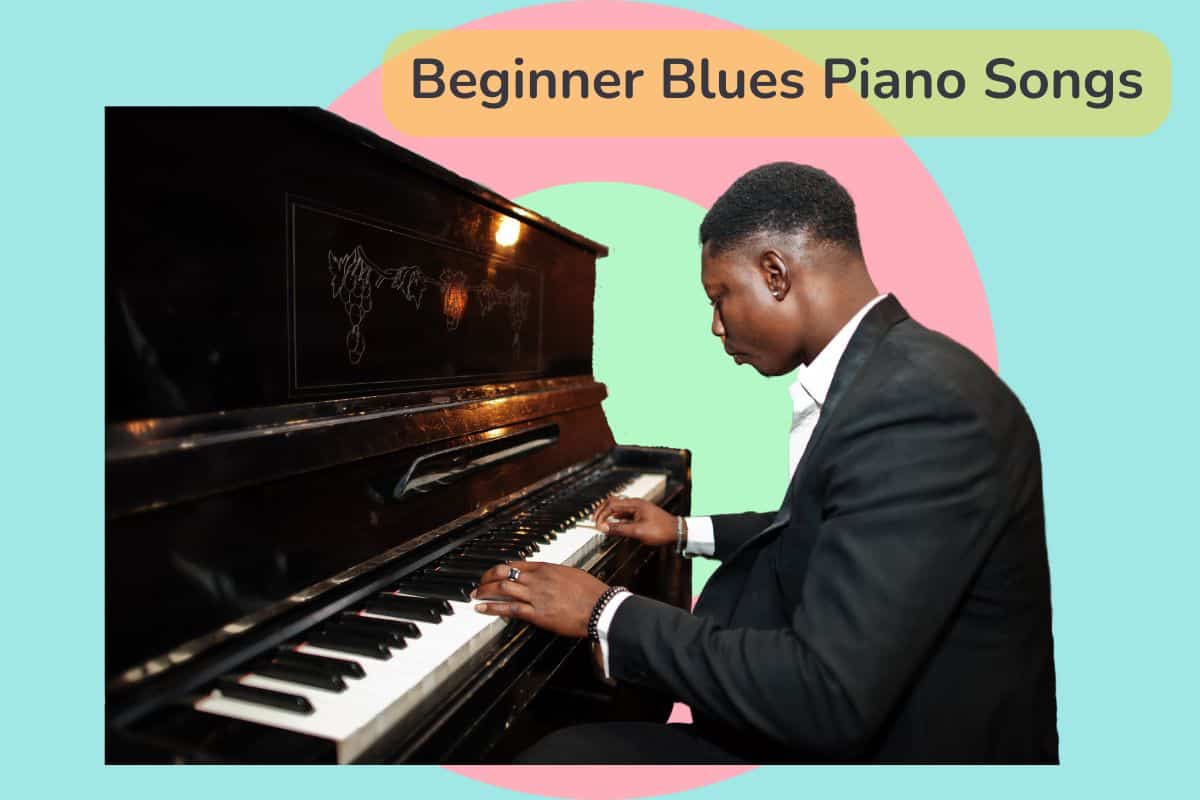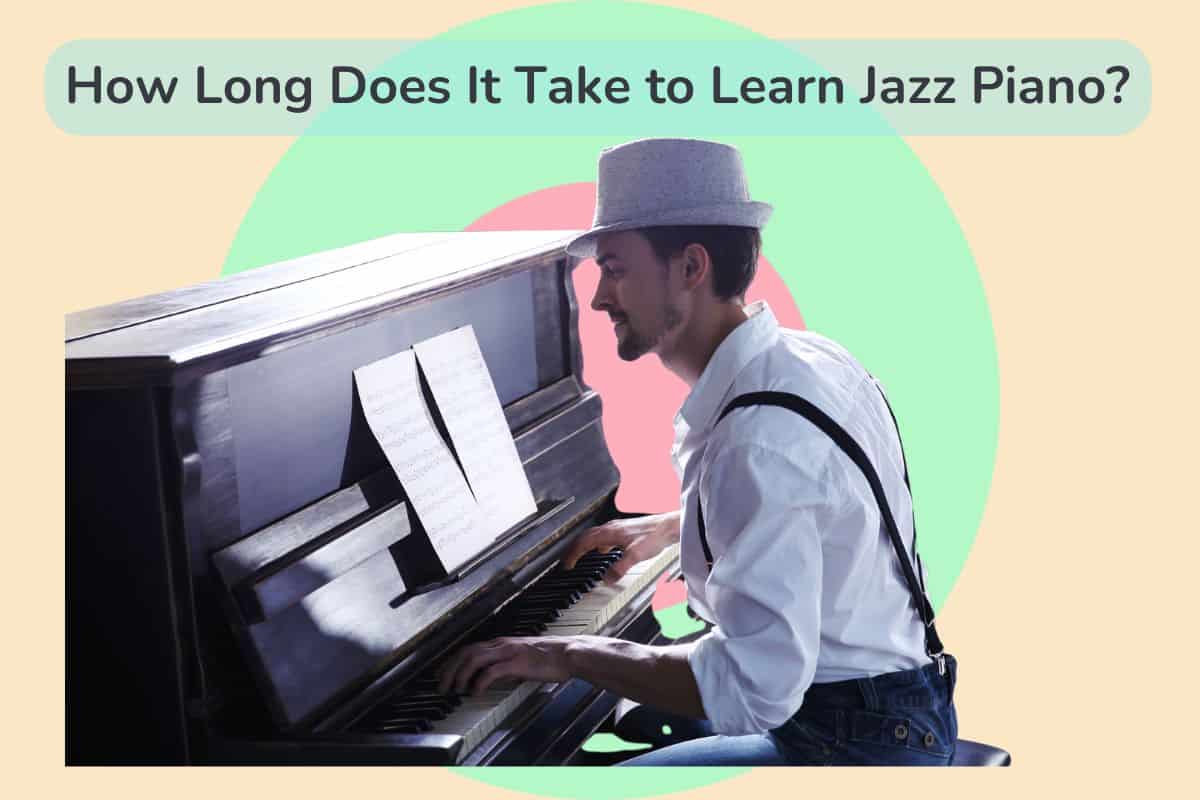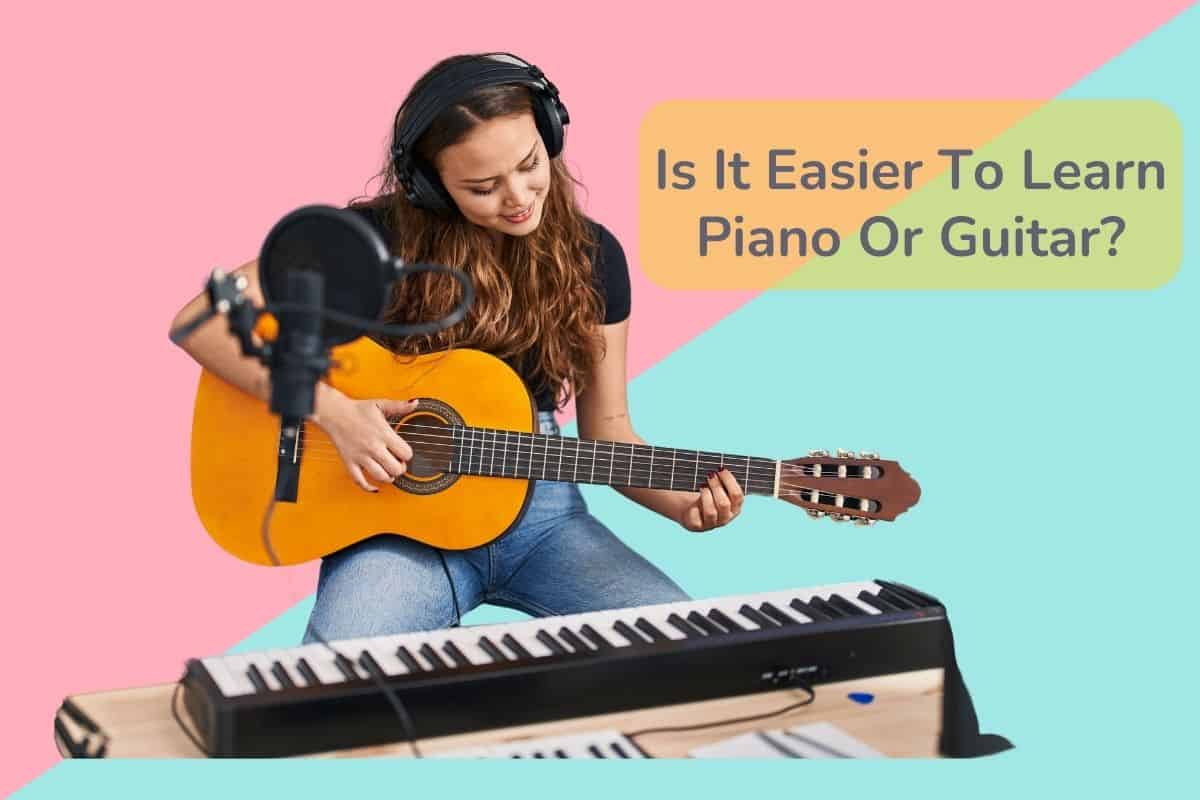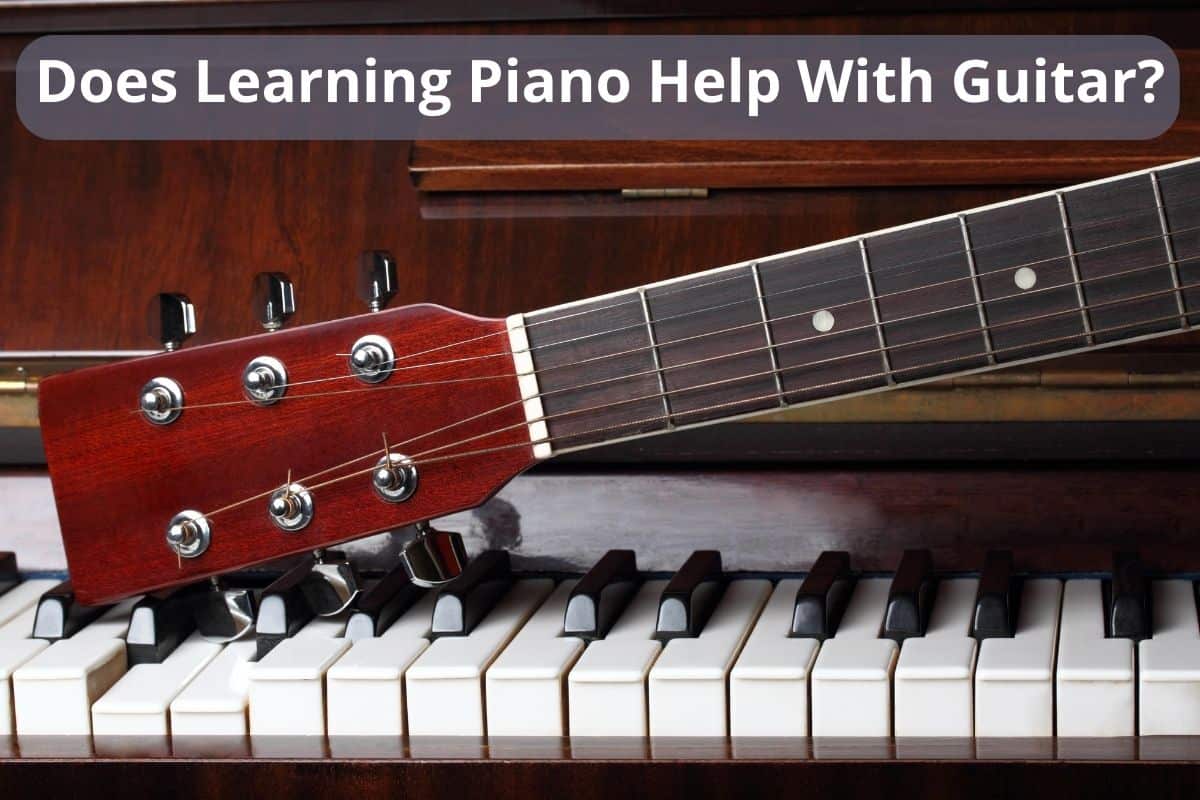For those who are considering remote piano lessons, you might be wondering if it’s worth it. What type of applications will your teachers be using, and will they be able to teach as effectively as they would in-person?
Here’s why live, online piano lessons are worth considering.
Remote piano lessons can save you time and money and offer you a broader range of teachers than your locality. Interactive lessons can be recorded and then revisited. You will need a fast internet connection, and sound quality may be inferior to in-person classes, but overall they are a good idea.
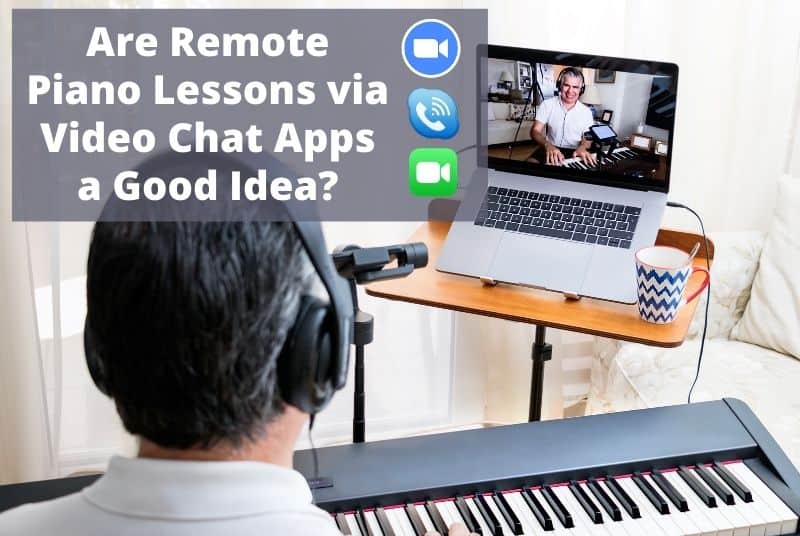
If you want to learn more about the types of applications that your teacher will likely be using, which one is the best for you, and whether you should take online courses along with these lessons, keep reading!
Are Remote Piano Lessons Worth It?
If you’re wondering whether remote piano lessons are worth it, then the answer is yes. Nothing can replace physical classes, but virtual piano lessons come pretty close.
Good news for students – most video chat applications are free to use. This is not the same case for teachers, who will need to buy a basic plan when using some of these applications to record their students’ lessons.
What You Need for Your Remote Piano Lessons
To have a good lesson experience, you will need the following items:
- A high-speed internet connection. Both the student and the teacher need to have access to a high-speed, private internet connection. You should avoid using public wifi networks like those in a school because they have many users, resulting in lower quality on a video chat application. There’s nothing worse than buffering and losing connection, especially when you’re in a class where both you and your teacher’s time is at stake.
- An electronic device. This device can be a phone, laptop, or an iPad. If you’re looking for sound quality, you should be using a computer or iPad. However, if you want your instructor to see and correct your fingerings as you play a piece, you need to mount your phone on a tripod above the keyboard.
- A piano or keyboard. You might have previously been able to go to your instructor’s house or studio and play there, but these remote lessons cannot work without your purchase of an instrument. Of course, you will also need one to practice on.
- Headphones with mic. Although they are not essential, having a set of webinar headphones with a built-in mic will make it easier to communicate with your teacher. If you have a digital piano, you can also use these when practice to keep the noise down and not disturb others. However, you will need a female USB to 3.5mm jack adaptor to make this work.
- A tripod. A tripod is not necessary for virtual lessons, but it is always better to have one. These will allow you to get better angles and zoom in up close to the keys. You can use this JOBY GorillaPad Action Tripod if you don’t already have one. Don’t forget that you need a phone or iPad mount to attach to your tripod! If you don’t have a mount already, you can get this KobraTech iPhone Mount.
Remote Piano Lessons vs. In-Person
Here’s a detailed account of the pros and cons you face when taking online piano classes over those in-person. This way, you can carefully consider all the variables and decide if these remote lessons are worth it for you or not. The lesson structure will be almost identical to going to your teacher’s house/studio and will be designed and catered for your experience level.
Pros of Remote Piano Lessons
Lack of Travelling
Online piano lessons mean that you won’t need to waste time and money going to your teacher’s studio. In 2014 the UK’s Office for National Statistics conducted some research looking a the relationship between commuting and personal well-being According to the study, long commutes have been proven to make travelers more tired, stressed, and miserable. As a result, when you arrive at your instructor’s house for a lesson, it’s likely that you won’t be performing as optimally as you should be.
Playing in your own house means you get a stress-free and relaxing environment to learn in. You will also be in the best frame of mind for your lesson. Another plus is that if you don’t have a car, you won’t need to dress up to take public transport, you can lounge about in your comfortable home clothes.
Fun Lessons
In remote lessons, teachers can share online resources and games with you so that you can better understand music theory. These online resources tend to be more innovative and exciting than the traditional exercises you might find in a physical theory book.
The share screen function means that you can easily access whatever your instructor wants you to see, be it videos or a piece of sheet music.
Speaking of sheet music, any piece or song that you want to play will be available on IMSLP or MuseScore, so you can have a ton of fun practicing and accessing new scores instantly.
Overall, remote lessons are great because they offer instant access to a vast library of games and exercises on the internet to blend theoretical and practical parts effortlessly.
Ease of Revision
If you ever stumble across a concept that your teacher has already explained but you’re still confused about, you don’t need to spend hours online figuring it out. Instead, you can ask your instructor to record the lesson on Skype so that you can revise specific sections later on. If they’re speaking too fast, you can even slow the speed of the recording down for better comprehension.
Increased Comfort
If you’re socially awkward or uncomfortable around strangers, remote lessons are the perfect way to learn a new skill. You don’t need to have your teacher in your personal space or be forced into the unfamiliar environment of their studio or house. Instead, the electronic monitor through which you and your teacher will communicate offers impersonality, so you don’t have to be quite so nervous.
Shy young children who feel uncomfortable vocalizing their thoughts and ideas can type in the chatbox instead. It’s the perfect solution to letting more introverted individuals feel more relaxed when they play.
Choice
For physical piano lessons, you will be limited to picking teachers in your immediate geographical vicinity. On the other hand, with remote piano lessons, you can have your pick of the litter.
As a result of the increased choices available, you will also be able to find instructors that are more affordable or more experienced.
If you’re working odd hours, you can find an instructor living in another time zone who will be up when you’re free. You won’t need to have to take lessons when you’re sleep-deprived or cram a class into your already packed day anymore.
Increased Focus
Decreased environmental distractions mean that online lessons will naturally be more focused. A study from 2010 and published in the American Journal of Distance Eductation details how student performance increased by more than 22% during lessons, showing how distance lessons increased learning patterns.
You will also be able to devote more time to the concepts taught in the actual lesson because you won’t need to waste precious time warming your fingers up by doing exercises on your instructor’s piano. These can be done before the class starts in the comfort of your home.
Child-Friendly
Parents concerned about their children’s progress can watch lessons as they take place in real-time. They don’t have to be inconvenienced with traveling to the studio – instead, they can watch from their office or home.
It’s also less intrusive to have a family member watching with their video and audio input turned off during a lesson than being physically present—this way, the student and teacher carry on without any intimidation.
Prevents Spread of Diseases
This factor is especially pertinent considering infectious diseases like COVID-19. Besides this, you won’t have to worry about catching or transmitting the flu or a cough in ordinary situations.
Cons of Skype Piano Lessons
Technical Errors
No matter the internet speed, you will always face a lingering possibility of lagging or hanging on your application. This means that you might not hear a piece played fluently, or you might miss your teacher’s instructions. However, these instances tend to be rare.
Specific video conferencing applications like Zoom only allow up to 40 minutes of a meeting before the call is ended automatically. This could result in disruptions to the lesson if you’re taking one-hour long classes.
Playing Together
It is also practically impossible to try to play a duet of any kind over a video chat application because there will always be a minuscule amount of lagging, which means the two players will never entirely be in coordination.
Even if you somehow manage to pull a duet off, starting or ending together correctly is impossible. You won’t be able to read your partner’s body language anymore, like nodding at them before beginning a piece. Instead, you will need to count your beats aloud.
Sound Quality
Audio quality through an application will always be inferior compared to being in the room with your teacher and the piano. This could make it challenging to discern between subtle dynamic changes, like going from a p to a pp.
Lag could also make it difficult to know how long you should ask your student to hold a note, especially in Romantic pieces with rubato, where this becomes very important.
It could be argued that the inferior sound quality will result in a decreased emotional connection to the piece and, therefore, a decreased interest in playing.
Hand Position
As proper finger and hand positions cannot be physically enforced owing to the virtual setting, it could lead to the adoption of incorrect hand positions.
At best, this is inconvenient because the pupil uses the wrong fingerings, making it slightly more difficult for them to play the piece. At worst, poor hand posture could strain the wrist and nerves, leading to hand injuries like carpal tunnel.
Which App is Better for Piano Lessons – Skype, Zoom, or FaceTime?
Suppose you’re wondering which one of these applications you should be using. In that case, the following section is devoted to:
- Introducing the contenders
- Performing some basic analysis of all three platforms to understand which would be best for your piano lessons.
The Contenders
SKYPE
Skype is the oldest platform and is such a vast market leader that people tend to call all online piano lessons “Skype lessons” even when they’re being held on another platform.
Skype’s great if you’re not really a tech person and don’t want to deal with learning another app. You probably already have it installed on your device and have used it often. And it’s free! However, Skype is a basic chat app that won’t have the features in other platforms.
You can’t record your calls or have multiple camera set-ups like Zoom. However, you can message your teacher between classes and even send files and attachments during the call. That can make it very convenient for sending music resources – scores, links, or pdfs — without interrupting the lesson.
And since Skype saves your conversation history with every contact, you can backscroll to find notes from past lessons.
Zoom
Most online piano teachers prefer Zoom because it lets you share screens (so you can look at the same musical score) and broadcast from different camera angles. So, you can set up a camera focused on your keyboard and another that gives a broader view of your posture and facial expression.
Zoom also has a built-in recording feature. Click the button to record the class, and pause recording whenever you want. At the end of the call, you’ll immediately receive the saved file.
Zoom also has the option to “Turn on Original Sound,” which means you hear the raw sound picked up by the microphone. It’s more accurate, but there is a chance you’ll get an echo if you don’t use headphones.
Unfortunately, Zoom only allows free calls up to 40 minutes and requires a paid subscription for longer calls. Only one participant needs a paid subscription, so if your piano teacher has an account, you don’t have to sign up for it.
Facetime
Facetime is pretty much like Skype, except it’s for Apple Devices. Designed for making calls with family and friends, its best features—like adding emojis or fun backgrounds—aren’t really relevant for online piano lessons. But if you already have Facetime on your tablet, and are a dedicated Apple user, then you can definitely use this platform for classes.
The Analysis
Sound
Video conferencing applications like Skype or Zoom all transmit audio differently, reflected in the quality of sound you will hear. In everyday life, you might not be able to discern any real difference.
This is because the human speaking voice’s normal acoustical range is much less complicated than a musical instrument playing a fast, dynamic piece with sudden variations in tempo and sound.
However, if you perform a sound comparison for the piano across all three platforms, you will find that Zoom has the best sound quality. If you’re an Apple user, FaceTime is a viable alternative for Zoom. However, Skype has a muffled and strange sound, so you shouldn’t use it.
Sound Quality Winner: Zoom
Screen Sharing
Skype and Zoom both offer screen sharing functions. As FaceTime is meant to be used as a simple video conferencing application, it does not provide certain functions like screen sharing. Hence, if your instructor is trying to teach an interactive, fun lesson with online resources, this will be made cumbersome using FaceTime.
They could always send the website link through the chat function on FaceTime, but that is much more inconvenient. As a result, either Skype or Zoom would be more appropriate if one uses online resources to teach.
Screen Sharing Winners: Zoom/Skype
Video Quality
With Apple recently adding 1080p as a Facetime feature, you’re sure to get excellent video quality even for older iPhones. Both Skype and Zoom offer up to 1080p as well, though you will need to change the settings from 720p to 1080p manually for Zoom. In conclusion, you can use any one of these applications for good video quality.
Video Quality Winner: Tie
Compatibility
Skype and Zoom can be installed on any electronic device. However, FaceTime is only an option for Apple users, so it is less inclusive than the other options.
Compatibility Winner: Skype/Zoom
Recording
Sometimes, students might want access to video recordings of their piano lessons so that they can re-watch specific portions to understand certain concepts better. Fortunately, Zoom and Skype both come with an in-built function available to allow for video recordings. However, FaceTime has no such function.
If you want to take a video recording of your FaceTime call, you will need to use the Screen Recorder of your Apple product. You will also need to ensure that you turn on the said screen recorder’s microphone. Otherwise, you won’t be able to capture any audio on your FaceTime call. This process is both inconvenient and clunky to go through.
Recording Winner: Skype/Zoom
Although Skype was the market leader previously, Zoom, a recent contender, offers better sound quality than Skype as well as other useful functions. Hence, it would be the better choice for your piano lessons.
But actually, most online piano teachers say that it doesn’t really matter what platform you use. The most important factor is having a high quality and stable internet connection and a good set of headphones and microphone.
Skype Piano Lessons vs. Online Piano Courses
There has been a recent buzz in advertisements about online piano courses and applications like Flowkey or Playground Sessions. But can these courses offer viable substitutes to Skype piano lessons?
When a student starts learning the basics of an instrument, they need a teacher to guide them. You need a teacher to learn about basic hand positions, notations, and theory for that instrument.
Once you have the basics down, if you don’t want to become a serious musician and instead play songs recreationally, you don’t need a teacher anymore. Those are the instances where you can use online piano courses like Flowkey. However, it’s inadvisable to start learning piano with only these courses.
Motivation
When using online piano courses, you will need to be driven and find your own motivation. Although these online piano courses are often much cheaper than paying for lessons with a live instructor, there will be no accountability. They also don’t assign homework or revision practices, unlike your teacher. As a result, progress is entirely contingent on your self-motivation and time management, which is likely to deteriorate unless you have an iron will.
When you have the expense of live piano lessons, whether in person or remotely, you will be more inclined to keep practicing and revising to get your money’s worth. Children may not be concerned about the price of lessons per se but will be motivated to practice because they fear facing their teacher’s disapproval.
Customizability
Every student has different strengths and weaknesses. A piano teacher will note these and customize every lesson according to those factors. With online piano courses, this will not be so. They are generally a one size fits all and are not customizable. So, again, it will be down to you to identify your weak areas and work on them.
Structure
Skype lessons have a thorough structure meticulously planned out by your teacher to facilitate your progress at the piano. Your teacher will likely tackle dynamics, tone, hand positions, pedaling, and other techniques throughout your lessons.
On the other hand, these online applications do not seem to teach courses based on piano theory and technique alone concretely. For example, on Flowkey, apart from a few courses detailing the basics, the main focus of the app is based on playing along with sheet music from songs and pieces.
Although these applications offer a unique concept in letting you play automated sheet music that shows which note you are on, it is not conducive to learning proper piano techniques.
In my view, if you are a beginner, these online courses like Flowkey and Playground Sessions work well with an independent teacher, whether that is online or in person. They are particularly good for learning music pieces where you can follow along, split the piece into smaller sections, slow the tempo down, practice separate hands and watch the course instructor’s finger positions as they play the piece.
Final Thoughts
It seems that you can learn anything online these days, and using video chat apps to learn the piano with live teachers is no exception. Although sound quality can be choppy, most of the audio gets across well, and you can make some real progress. It also offers many more advantages than negatives, and you can have more freedom of choice with your teachers and work with them to fit your schedule.
Of course, the next question is, ‘Where can I find online teachers?’ and as it happens we’ve covered some of the places in this article here…
